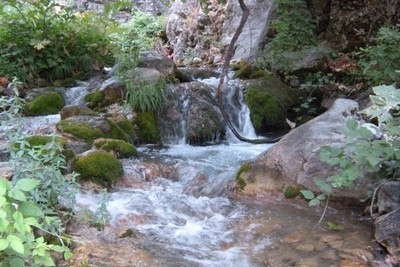Kitab reserve to be included in global geoparks network of UNESCO

Prospects of development in our Republic of ecotourism was in the focus of a seminar that took place in the capital.
The event was organized by the State Committee of the Republic of Uzbekistan on Geology and Mineral Resources, and its participants were employees of the State Committee for nature protection of the country, Institute of Geology and Geophysics, Academy of Sciences of Uzbekistan, national company "Uzbektourism", the International program of UNESCO geoparks and the Kitab state geological reserve.
The main theme of the seminar was the inclusion of reserve in the global network of geoparks of UNESCO and the possibility of expanding the registry of the eco-tourism facilities in our country.
Created in Uzbekistan a third of a century ago, the reserve has attracted quite by chance in our days the attention of the international environmental community. The territory of this nature-protected object, which is worth to note, has the status of international natural geological reserve and represents a unique corner of the planet.
The reserve is located in the picturesque spurs of Zarafshan ridge, on the coast of the river Jindarya and only 45 km East of the district center – the town of Kitab. The amazing natural road to the area runs through the ancient town of Shakhrisabz, the birthplace of the great statesman Amir Temur.
Shakhrisabz, has 2700 years of history, in ancient times was called Kesh. Famous travelers, such as Chinese monk Xuan Jian (VII century), Italian merchant Marco Polo (XIII century), Spanish Ambassador to the court of Amir Temur Rui Gonzalez de Clavijo (XIV century), all of them have left enthusiastic testimonies about it.
The reserve is relatively small. Its territory is located at elevations of 1300 meters to 2650 meters below sea level, is nearly 40 thousand hectares. But what are the hectares! Mountains dissected unique in its beauty, depth and diversity of gorges and covered with thickets of juniper.
The North-Eastern part of the reserve is the picturesque gorge of Shirdor with panoramic views of snow-capped peaks of the Hissar range and mount Hazret-Sultan. The name is not accidental - according to a legend, the saint was buried at the mount.
The main attraction of the reserve – marine sedimentary deposits with a capacity of 4130 meters! A kind of layer cake of rocks was "baked" by nature 370-470 million years ago in a very important for the history of the planet period in the Paleozoic era.
Changes once occurred significantly influenced the formation and development of life on it. These details, with a millions of years of history, can be traced back through the "stuffing" of the Kitab pie. The things that the world presented in its other regions fragmented, nature gathered all of them here in quite a small area.
Artifacts from the Natural museum visitors will be able to see deployed in the reserve exposures.
But most interesting, of course, access to paleontological and stratigraphic section, go along it on paved trails and to see unique objects from the viewing platforms.
However, the Kitab reserve is famous not only with a glimpse into the past of our planet. The area is also rich and interesting with its representatives of the modern fauna and flora.
Juniper forest, various trees and shrubs, flowing rivers, waterfalls, elevation, subalpine landscapes, rich forage base and the protected mode provided the most favorable opportunities of modern biodiversity.
The waters of the reserve are inhabited by three species of fish. There are also two species of reptiles. Mammals are represented by 21 species, birds 128. All vertebrates 168. Of them, at least a dozen is listed in the Red book of Uzbekistan.
One of such reserve protected species is Tien Shan brown bear. A feature of the species – light color, bright, long claws on the front paws. Height for bears is relatively small – no more than 140 centimeters. At the beginning of the last century, bears of this subspecies in Uzbekistan could be met everywhere, even in the vicinity of Tashkent.
Other fauna and flora are also carefully protected. Four species of birds of prey that are permanent inhabitants of the reserve are listed in the Red book of Uzbekistan and Red list of the International Union for the conservation of nature. It is the Griffon vulture, black vulture, bearded vulture and golden eagle.
Many of the 800 species growing in the reserve plants are of great practical interest. 280 of them are already being used in official and folk medicine.
In the field of international tourism, as was noted at the seminar, ecotourism or otherwise, geotourism is seen as one of the most promising areas. Our country due to its geographical position, rich in geological history and unique landscape has a very high potential for the development of such tourism. This opens up for the Republic also the greatest opportunity to create complexes of geoparks and to carry out geotours.
Source: Jahonnews.uz



